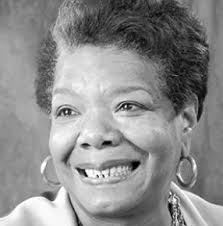Forgiving the hardship and trauma of the residential schools
Reflection:
I believe within this Compare and Contrast essay I was able to integrate transition words almost seamlessly in my paragraphs while still using them sparingly. Also while not bogging up the essay with pretentious language I was able to use a strong vocabulary to augment my arguments in an unobtrusive way.
My paragraphs don’t flow from one to another in a natural way from sentence to sentence and the organization was lacking in parts of the essay. All in all, they don’t account for the overall experience and feel cobbled together to create a somewhat connected conclusion. As well as a better use of quotes to help my point reach the reader better.
What literature has taught me about the effects of racism
Throughout both classic and contemporary literature authors explore the human condition in many different ways. In Indian Horse Saul faces hardship within many aspects of his life. Prejudice and abuse seem to follow him around everywhere. Saul tries to keep it all to himself because of the abandonment from his parents and betrayal at the hands of Father Leboutillier. Every time that Saul reaches contentment everything seems to burst at the seams. That’s why even after his soul-searching journey Saul realizes that he needs to return to the only home he has left. Comparatively, in “The Watch”, being a short story but a snippet of the protagonist’s life is shown. When we reach him, he has already been torn apart by the Holocaust. In this way, we see a broken man who barely has the strength to return to his home-town. Because, without everything that made it be, he hardly recognizes it. Indian Horse teaches us that abandoning our past selves never works if we want to move on. In Indian Horse no matter how far Saul strays from his home, culture, and land he will always be Ojibway. That is why, in the end, the government could never fully destroy first nations culture because as Betty from “Sugar Falls” teaches us, she lives inside everyone who hears our story. These three sources together are a clear example of resisting hardship. No matter how much people try to beat into us the idea that we are lesser, we will always fight back and show that we are all equal. Even if it may take some time for our usurpers to realize it. That is what we can learn from both history and literature, fiction and non-fiction, stories and the truth.
COD COI
- Elle explique la règle de grammaire à Paul ?
Oui, __Elle la lui explique____________.
- Tu me prêt es ton téléphone cellulaire ?
Non, ____je ne te le prête pas___________________.
- Vous apportez ces fleurs à vos parents ?
Oui, __je les leur apporte______________.
- Tu racontes tes aventures à Marie ?
Oui, _je les lui raconte _________________.
- Demandes-tu ton chemin au policier ?
Non, ___Je le lui demande___.
- Proposes-tu le nouveau remède à ton patient ?
Oui, ___je le lui propose___.
Film The Rocket
Core Competencies – Projet Final “Les Larmes Noires”
Self Assessment – First Aid
First Aid – Shock
Protected: Spoken Word- “A Grim Future”
Still I Rise – Maya Angelou
Type: Lyric
Explanation of the poem: This poem by Maya Angelou explores the repercussions of slavery and how the bond between Caucasian citizens and African citizens only continues to grow even after. The poem shows resistance and how despite all the prejudice and discrimination Maya Angelou will still come back, harder, and stronger than before. No matter what, she will rise. The poem questions the reader, if they feel that her equality is unjustified and her confidence is unwarranted.
Theme Statement: The slave-traders and Caucasian-Americans have held power over their African-American counterparts for a long time, even now, but with “swagger”, self-respect, despite what anyone thinks, society can learn to treat others equally.




